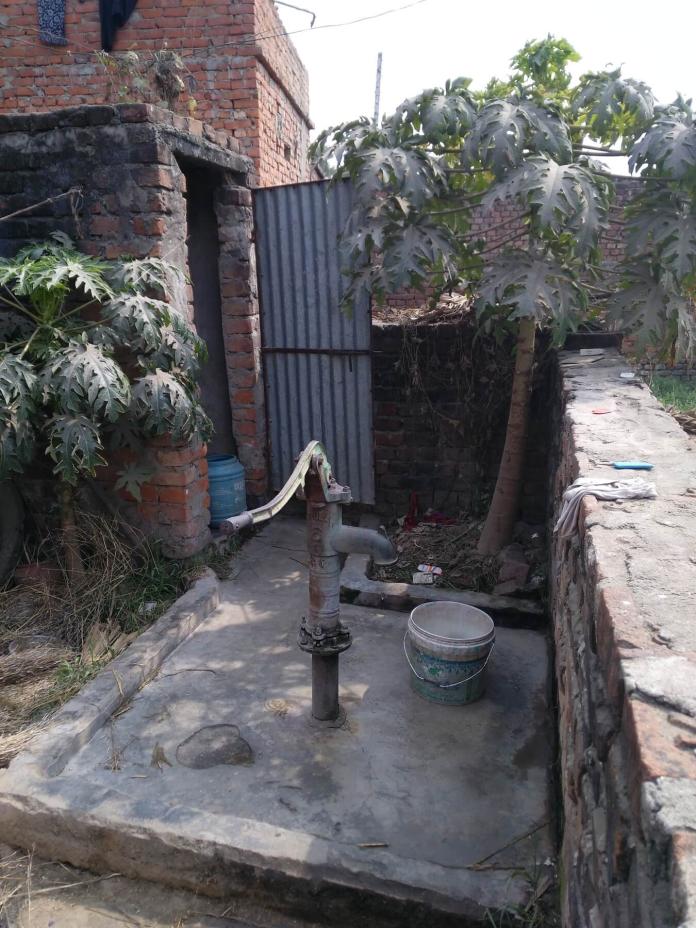Practitioner Insights: using behavioural insights to design more impactful programmes
As part of a 3ie grant window, OPM collaborated with ideas42 and World Vision India to understand behavioural barriers to toilet use in rural Bihar.
-
Date
December 2017
-
Area of expertiseGovernance
-
CountryIndia
-
KeywordPublic Sector Governance (PSG)
-
OfficesOPM India , OPM United Kingdom
Rates of open defecation in India have slowly but steadily decreased over the last two decades. Despite some progress, India compares poorly to other countries of similar socioeconomic status. The large-scale sanitation subsidy programmes of the last two decades have failed to catalyse a significant reduction of open defecation in India. As part of a 3ie grant window, we collaborated with ideas42 and World Vision India to understand behavioural barriers to toilet use in rural Bihar.
Most development projects focus on people’s choices and work towards making ‘better’ choices available and accessible for individuals. The implicit assumption is that once better choices are available and individuals are made aware of them, they will opt for these choices. However, this is not always the case. In recent years, international development work has pushed towards enhancing understanding of these behaviours and choices when designing interventions. The World Bank Development Report of 2015 placed behavioural economics at the centre of its agenda, and various governments have set up behavioural science units (‘nudges’) to promote more efficient policy making.
[button-link text="Explore the rest of our Practitioner Insights series" link="https://www.opml.co.uk/search?campaign_tags%5B%5D=practitioner-insights&contenttypes%5B%5D=blog"]
In September 2016, OPM worked with ideas42 and World Vision India on a project to increase toilet use in rural Bihar by using behavioural insights about individual decision-making processes. This research was conducted in villages in which World Vision India operates sanitation programmes under the ‘Community Led Total Sanitation’ programme, which had access to funding for the construction of toilets and implemented sanitation awareness programmes. Under the government of India’s flagship Swacchh Bharat programme, all rural households are eligible for a subsidy/incentive payment to build toilets. Research shows that even in households with toilets, toilet use is partial, and open defecation remains the preferred choice amongst adult members of a household.
This research tried to understand why households chose to engage in sub-optimal behaviour (i.e. open defecation) despite having access to seemingly better choices. Based on a behavioural diagnosis process designed by ideas42, the team identified key challenges and opportunities to toilet use amongst adults in rural Bihar.
Here are the four key lessons from the behavioural design process:
1) Behavioural design needs to be guided by extensive contextual research. Behavioural science supports an improved understanding of the decision-making processes. However, this lens needs to be grounded in the social and cultural reality in which the problem is located. In this project, the team conducted individual interviews and focus group discussions in the Nalanda district of Bihar and identified structural and behavioural issues with the toilets: it soon became clear that the fear of the pit filling up and the aversion to cleaning a pit were among the key reasons that prevented toilet use amongst households.
Additionally, open defecation provided a social outlet for many, where they went to the fields with their relatives and peers, and this was an enjoyable social routine. This contextual research helped us understand the key individual and social biases that prevented toilet use, which would not otherwise have been apparent.

2) The same behaviour bottleneck could operate at different levels. At the end of the qualitative research, the team identified key behavioural barriers relating both to intent and habit: that is, a solution would need to help create the intent to use a toilet and then inculcate the habit of regularly using toilets. It was also clear that both of these barriers were influenced by community choices — by peers/caste dynamics in society and by gender/age dynamics within a household. Thus, it was not enough to work on individual intention and habit alone. The intervention would need to tackle biases at individual, household and community levels.
3) Behaviour-centred design needs innovative solutions with repeated refinements. After initial behavioural mapping, the entire team worked on multiple design sessions to brainstorm ideas for intervention design. The designs varied from simple fixes (like a pit cleaning poster) to more complex solutions (like creating a pit-filling counter). The team tested how feasible, effective, and innovative these designs were. Multiple iterations of each solution was proposed and four were selected for piloting. Only two proposals were considered acceptable and appropriate, and these were further adapted during the pilot testing. Each iteration has led to contextual, implementable, and, hopefully, more effective design.
4) Nudges will have limited success in pushing the needle on entrenched social roadblocks. Caste purity, the practice of untouchability, social benefits of open defecation, gender roles, and misconceptions around pit filling and emptying emerged as key barriers to toilet use. Some of these are easier to tackle with simple behaviour nudges. However, this is far from the case for the complicated caste dynamics that influence toilet use. These require a comprehensive social shift and would not be within the scope of any single intervention. Additionally, behavioural design will have limited success in changing supply side barriers.
It is, therefore, important to recognise the limitations of nudges and acknowledge that many problems, particularly endemic structural inequalities, may fall outside the ambit of its design. Understanding the limitations and challenges of simple behavioural nudges will be important in setting expectations and designing effective solutions.
Behavioural-centred design provides an important lens through which to understand and influence decision making. It accounts for the irrationality of the human decision-making process, simulating behaviour that is more likely to be replicated in real life scenarios. This allows for more realistic and effective design solutions. A well-researched and contextually-designed behavioural intervention can have important implications for policymaking: this will require a thorough understanding of the local social dynamics and the behavioural constructs that could apply in the situation. Behavioural design is a vital tool for more impactful policies if its possibilities and limits are recognised and understood.
Key takeaways
- Behavioural design needs to be grounded in the context and the cultural reality of the intervention area; it is crucial that intervention designs respond to the social norms and values which influence human behaviour.
- It is important to look at the different levels at which values, norms, and decisions operate.
- To develop and deliver effective solutions, it would be useful to test a range of interventions, scaling those that prove impactful.
- Limitations to the impact of ‘nudging’ techniques need to be recognised, helping set realistic goals and expectations. Changing perceptions and behaviour is hard and not all interventions will have far-reaching successes.
Shruti Viswanathan is a consultant within OPM’s Public Sector Governance portfolio, based in the New Delhi office. Shruti has over four years of experience working with government systems in India on effective service delivery.
[button-link text="Explore the rest of our Practitioner Insights series" link="https://www.opml.co.uk/search?campaign_tags%5B%5D=practitioner-insights&contenttypes%5B%5D=blog"]

